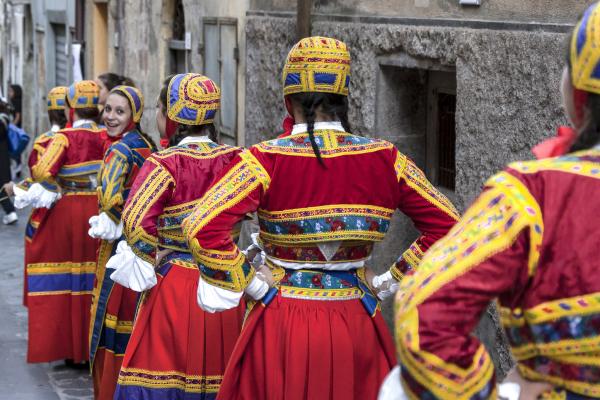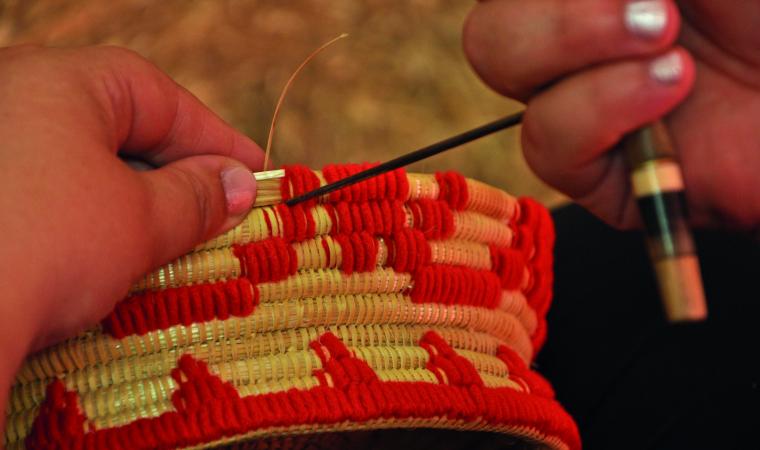
Original and imbued with meanings, the clothes and jewels are a fusion of signs left by the succession of different cultures in Sardinia: Nuragic, Phoenician, Greek, Byzantine and Spanish. Nothing was lost. Like the bright, coloured bonnets worn by the women of Desulo on festive days. They decorated them themselves, embroidering miniature details of the flamboyant Desulo dress: yellow, red and blue geometric designs alternated with embellishments based on the fantasy of skilled and sensitive artists. That of the women of Tempio Pausania was a different world, with their austere precious silk damask dress, which was completely black. They were admired for the elegant grace of their demeanour. On their heads, they wore a cascade of white lace, tied with filigree.
Different colours and styles from place to place, numerous souls of a mysterious and enchanting Island, but one voice for all and pride in belonging to an ancestral lineage that has passed down the art of savoir faire. The women's hands coloured the textured fabrics with Sardinian grasses, saffron for the yellow of the silk handkerchief from Orgosolo, indigo for the blue of the skirt from Bosa. They gave a shape to the fantastic bodices, embroidered shirts and precious shawls like those worn by the women of Oliena.
The women wove the patterns and the men entwined fine gold and silver threads, fixed with beads. Today, the work is identical to that of the Phoenician jewels found in Karalis, the ancient Cagliari, Nora, Neapolis and Tharros. The ancient art still lives on in traditional jewellery, like the double-capped buttons inspired by the form of the female bosom, referring to the legend of Tanit, the Phoenician goddess of fertility. Goddesses and also fairies inhabited the forests in the domus de Janas. It is said that those of Montessu would weave gold threads together to make a precious fabric that spoke to the women's hearts, the Sardinian wedding band, donated as a promise of matrimony.
The Sardinian wedding band is a jewel loved for the symbolic value and beauty of the filigree, entirely pounded by hand by the master goldsmiths. A masterpiece of precision and harmony. The shape is obtained by joining small beads that look like grains of wheat together, a sign of prosperity for the future spouses. Alongside this, there is the manfide. This portrays the union of two hands holding each other tightly and symbolizing the marital bond. The fine workmanship in all of the Sardinian jewellery is carried out using a technique passed down over the centuries: from the necklaces and pendants, chains, Sardinian gancera necklaces, earrings and broaches, to buttons, amulets and other sacred objects. They all adorn the traditional costumes, each an expression of a community.













